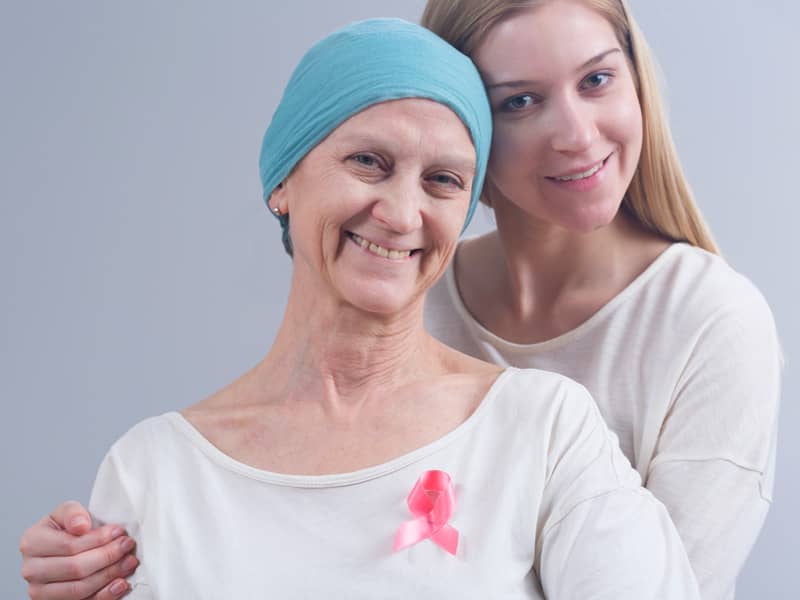
You all know that skipping sunscreen, ignoring changing moles, and using tanning beds can put you at higher risk for skin cancer (and if you don’t, you do now!). In fact, a recent study by the Norris Cotton Cancer Center at the Dartmouth-Hitchcock Medical Center noted that indoor tanning products can produce 10 to 15 times as much UV radiation as the midday sun. But read on for other risk factors you might not be aware of.
Using Viagra.
In a study published this year in The Journal of American Medicine Internal Medicine, researchers discovered that men who used sildenafil (Viagra, the male erectile dysfunction medication), had a 92 percent increased risk for developing melanoma, the most dangerous type of skin cancer. That does not mean that the other ED medications such as tadalafil (Cialis) and vardenafil (Levitra) do not carry the risk; it’s just that this study only looked at sildenafil. It also doesn’t prove that sildenafil causes melanoma, but that it can increase the risk. If you are thinking of taking sildenafil or are currently taking it, weigh the benefits and discuss possible alternatives with your physician. And if you do use it, make sure you get yearly full body checks from a dermatologist.
Thinking only fair-skinned people are at risk.
Fair-skinned people usually know to take precautions in the sun. And if they forget, severe sunburns will soon remind them. However, if you think having a darker complexion means you don’t have to be as cautious, think again. “Darker skin has more and longer lasting melanin (the pigment which gives skin its color), which provides some inherent protection against UV rays, but not enough,” said Adam Friedman, M.D., director of dermatologic research, Division of Dermatology, Montefiore Medical Center. “This unique biological difference means harmful effects of UV exposure occur more slowly in people of color, but UV rays are still damaging and can cause skin cancer.”
Another issue is that while more fair-skinned people do get skin cancer, darker-skinned people are at greater risk of getting late diagnoses, leading to lower survival rates. In fact, musician Bob Marley died of a toe melanoma—he thought it was a soccer injury that wasn’t healing. Always wear sunscreen (SPF 30 or higher + broad spectrum) and protect yourself from the sun. See a dermatologist about any spot that is changing over time, including size, shape, and color.
Where you live.
Living in the tropics is an obvious risk: The sun’s rays are strongest near the equator, there are more days of the year with strong sunlight, and you walk around in fewer clothes, exposing more of your skin. But living at higher elevations can also pose dangers. “Ultraviolet light is stronger as elevation increases, because the thinner atmosphere at higher altitudes cannot filter UV as effectively as it does at sea level,” explains Daniela Kroshinsky, MD, MPH, a spokesperson for the American Academy of Dermatology.
Having HPV (Human Papillomavirus).
There are more than 150 strains of HPV viruses. The most well-known are sexually transmitted, and cause genital warts and increase risk of cervical cancer. But there are other types of HPV viruses that spread without sexual contact, causing non-genital warts, usually on the arms, hands, chest and feet. They are contracted through skin-to-skin contact with the wart, like if you’ve touched someone’s hand who has touched a wart or used someone’s towel who has one.
A study led by Margaret Karagas, Ph.D., Professor of Community and Family Medicine Geisel School of Medicine at Dartmouth College, found that HPV skin infection heightens the risk of developing certain skin cancers such as basal and squamous cell carcinomas and is worsened if people are taking immunosuppression drugs. Talk with your doctor about getting the HPV vaccine, no matter what gender you are, and check warts often to see if there are any changes.
Scars from disease and burns.
“Long-terms scars and ulcers that don’t heal are at large risk for developing skin cancer,” says Dr. Kroshinsky, who is also Director of Pediatric Dermatology and Inpatient Dermatology, Massachusetts General Hospital, Boston. “They can develop squamous cell carcinoma due to chronic inflammation changing the cells into malignant cells.”
A healed scar is fine, unless it begins to change. Then have it checked out by a dermatologist.
Being a male over the age of 50.
When The American Academy of Dermatology conducted a skin cancer screening program, one of the surprising results was that the population most likely to develop skin cancer was men over the age of 50. Dr. Kroshinsky speculates that it may be due to the fact that they spend more time in the sun with their shirts off than women do.

